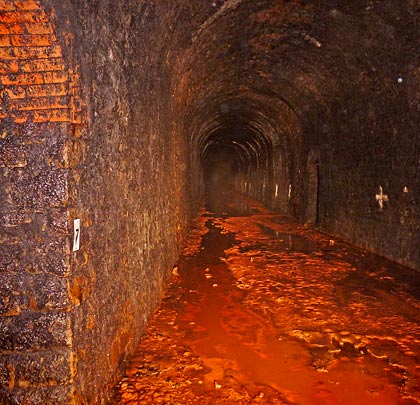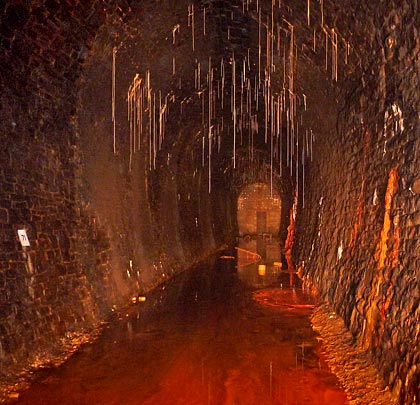Cymmer Tunnel
Cymmer Tunnel






















The Llynvi and Ogmore Railway had its headquarters at Tondu in Glamorgan and was formed on 1st July 1866 by the merger of the broad-gauge Llynvi Valley Railway and the standard gauge Ogmore Valley Railway. Its subsequent extension northwards to meet the South Wales Mineral Railway featured two significant pieces of engineering – the viaduct at Cymmer and the tunnel that led onto it.
The latter established a 1,595-yard connection between the Afan and Llynfi valleys, emerging from the hill that separates them, Foel Fawr, immediately to the north of Caerau Station. 1st July 1878 saw its opening for freight, with passenger services beginning two years later. The Great Western took change in 1883.
The short southern approach cutting curves to the east and leads to a functional masonry portal. The lining of the single-track bore is also in stone except for a brick insert at the crown of the arch. Regular refuges are provided in both side walls. The depth of the tunnel below ground precludes any ventilation shafts. The cutting at the Cymmer end was also short and accommodated a set of points to provide access onto the viaduct and onwards to the South Wales Mineral Railway, or east into Cymmer General Station and through Rhondda Tunnel to Blaenrhondda.
The deteriorating condition of Cymmer Tunnel contributed to the decision to close the line. The last train travelled it on 14th July 1970 with the official closure recorded on 24th August. Since then the northern portal has been buried and its approach landscaped. This has had a negative impact on drainage within the tunnel which is bathed in orange mud, several inches deep. Lengthy stalactites have formed close to the blocked northern portal.
Click here for more of Steve’s Welsh tunnel shots (Flickr).







